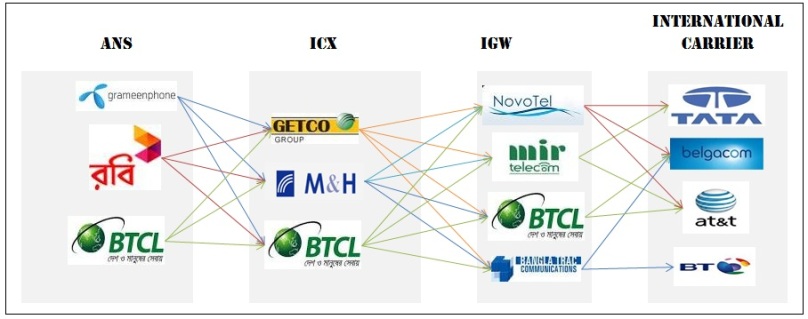Hey guys I am back again after a long chanting holiday and I am all geared up to write some good articles:-) This time I am more focused in writing on our Telecom Industry. Lately I have met countless people who have asked me so many questions regarding this and I felt an sudden urge of Social Responsibility to bring the subject matter to Public. First I will start with the Telecom Sector and then move on to Datacom Sector later on.
Lets explore the Telecom Entities briefly. Once you have a foundation, I shall then move on to answer complex queries that I often hear from people. Questions like the followings.
- Will the Bandwidth of Bangladesh be reduced with the Introduction of new IIG and ITC?
- Will the IGW survive in this competitive market as so new Licences been issued?
- What should be the next move for IGWs and ICXs?
- What is White Route and what is Grey Route?
- What are the Business Prospects of the IIG and ITC Operators?
- How does the International Telcom WholeSale Market works and how would you operate it if you be the COO?
Telecom Sector:
If you really want know the big picture of our Telecom Sector then here is it.
As you can see from the picture, Its a three tier combination- ANS, ICX and IGWs.
Who are these ANSs?
As you can guess from the picture, the Mobile or Land Phone Operators are referred as ANS [Access Network Service]. Grameen Phone, Bangla Link, Robi or CityCell they all are ANS.
Who are the ICXs?
If a Subscriber calls from GP to GP then the call get route internally. But if a Subscriber calls from GP to BanglaLink then the call gets routed via ICX. Yap, they are the middleman sitting right in the middle enjoying the cream. ICX Stands for Inter Exchange.
Who are the IGWs?
The word IGW stands for International Gateway. Both the term International and Gateway here is important. If you are calling abroad or receiving the call from outside the country, then the calls has to enter through the IGWS. The iGW operators then route the calls towards ICX and the ICX then routes them to the intended ANS Operator.
Who are the International Carriers?
The international Carriers or simply saying carriers are the WholeSale Telecom Operator who are connected directly or indirectly to different countries. From any part of the world if any of your relatives gives you a call, then the call are being carried by these Carriers to the IGWs. They are the key players that makes the difference for IGWs. If an IGW has more connection with more bigger Carriers, then chances are higher that they will receive more calls and thus can make more money out of it.
In the Telecom Industry, there is a saying, “If A Party is Using B Party’s Network then B Party will Charge for that”. The charges could be on Pulse based or just One Second incremental based, it varies. The fancy term used to identify this phenomenon is known as Revenue Sharing. More on Revenue Sharing later.
Breaking NEWS:
There were 4 IGWs, 3 ICXs, 2 IIGs and a few ANS operators. Everyone was happy up until April 2012 when BTRC went crazy and handed over 82 new gateway licences under the political influence making the market extremely vulnerable unstable and unpredictable. These new 82 licenses comprises of 24 international gateway (IGW), 24 interconnection exchange (ICX) and 34 international internet gateway (IIG) licences. In addition to that, 6 (ITC) International Terrestrial Cable Licenses was issued instead of 3!!! In brief, who ever has applied for a license was awarded with it. Well seems like everyone is now embarrassed of the fact as the Market itself is too small for so many players!!! Now What?
